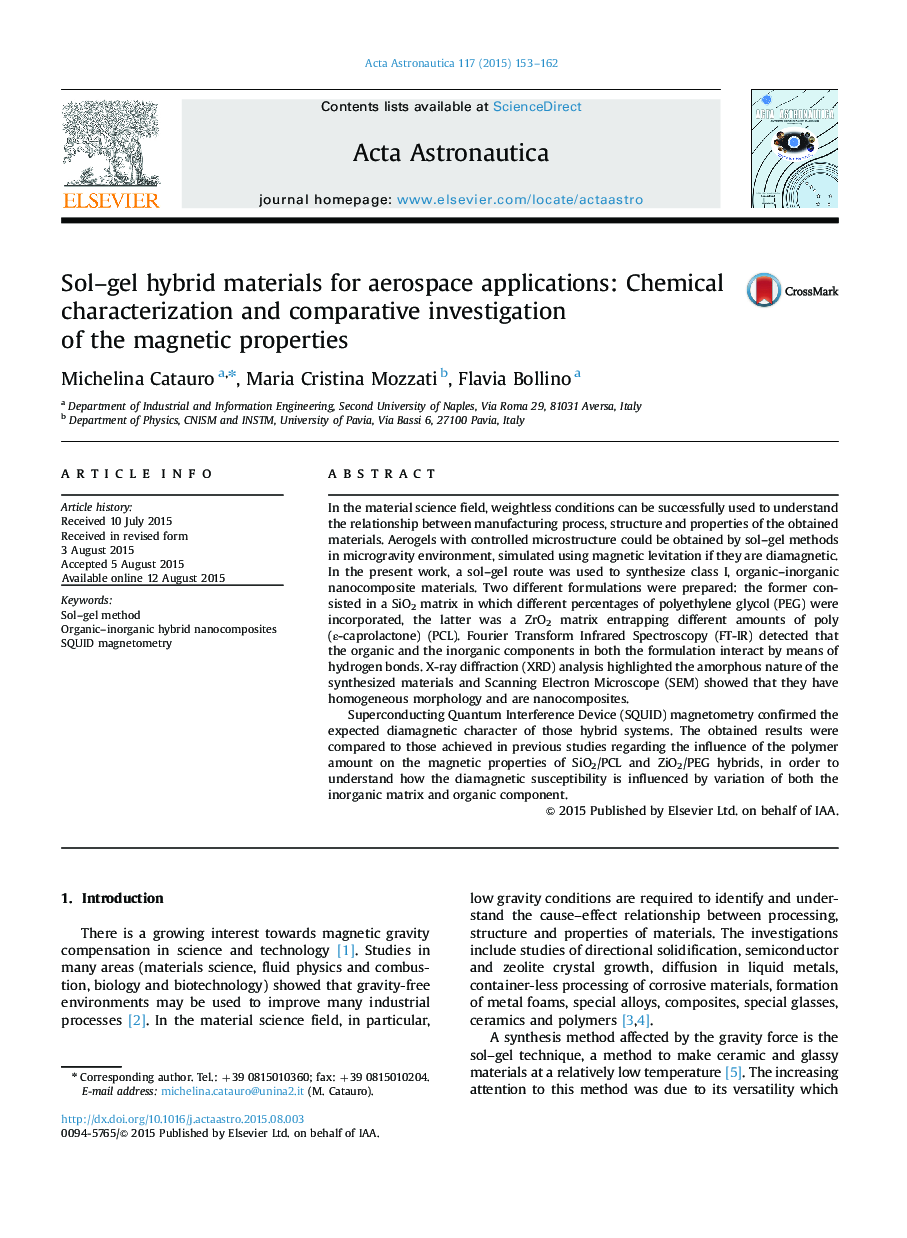| Article ID | Journal | Published Year | Pages | File Type |
|---|---|---|---|---|
| 1714330 | Acta Astronautica | 2015 | 10 Pages |
•Hybrids nanocomposites for aerospace applications were synthesized via sol–gel.•Both SiO2/PEG and ZrO2/PCL hybrids have a diamagnetic character.•|χ|-value increases with polymer amount and is independent of temperature.
In the material science field, weightless conditions can be successfully used to understand the relationship between manufacturing process, structure and properties of the obtained materials. Aerogels with controlled microstructure could be obtained by sol–gel methods in microgravity environment, simulated using magnetic levitation if they are diamagnetic. In the present work, a sol–gel route was used to synthesize class I, organic–inorganic nanocomposite materials. Two different formulations were prepared: the former consisted in a SiO2 matrix in which different percentages of polyethylene glycol (PEG) were incorporated, the latter was a ZrO2 matrix entrapping different amounts of poly (ε-caprolactone) (PCL). Fourier Transform Infrared Spectroscopy (FT-IR) detected that the organic and the inorganic components in both the formulation interact by means of hydrogen bonds. X-ray diffraction (XRD) analysis highlighted the amorphous nature of the synthesized materials and Scanning Electron Microscope (SEM) showed that they have homogeneous morphology and are nanocomposites.Superconducting Quantum Interference Device (SQUID) magnetometry confirmed the expected diamagnetic character of those hybrid systems. The obtained results were compared to those achieved in previous studies regarding the influence of the polymer amount on the magnetic properties of SiO2/PCL and ZiO2/PEG hybrids, in order to understand how the diamagnetic susceptibility is influenced by variation of both the inorganic matrix and organic component.
